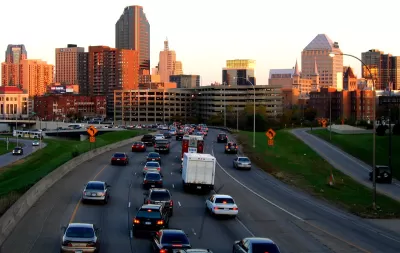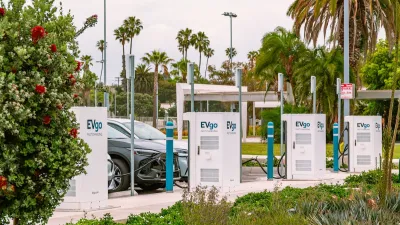The report “Pathways to Decarbonizing Transportation in Minnesota” also calls for a greater adoption of biofuels and actions to decrease vehicle miles traveled.

A new Minnesota Department of Transportation (MnDOT) report outlines strategies to decrease the state’s transportation emissions. The transportation sector is the largest contributor to fossil fuel emissions in the state of Minnesota.
The report, called "Pathways to Decarbonizing Transportation in Minnesota" recommends a greater adoption of biofuels and actions to decrease vehicle miles traveled (VMT). "The report also says Gov. Tim Walz should encourage the Minnesota Pollution Control Agency to develop a rulemaking for the state to adopt low-emission vehicle standards," Eleanor Lamb reports for Transport Topics.
The report also calls for a collaborating with neighboring states on Electric Vehicle Corridors. These routes would provide charging facilities for electric vehicles traveling through the Midwest, and remove the persistent barrier making inter-city travel in electric vehicles difficult.
This report is part of ongoing efforts by the state to curb its emissions. "Minnesota passed the Next Generation Energy Act (NGEA) in 2007, which laid out goals for the state to reduce GHG emissions," Lamb writes. While Minnesota has reduced emissions, it missed its 2015 goal and if it does not enact new policies is unlikely to reach its 2025 goal either.
FULL STORY: Minnesota DOT Identifies Strategies for Decarbonization

Study: Maui’s Plan to Convert Vacation Rentals to Long-Term Housing Could Cause Nearly $1 Billion Economic Loss
The plan would reduce visitor accommodation by 25,% resulting in 1,900 jobs lost.

Alabama: Trump Terminates Settlements for Black Communities Harmed By Raw Sewage
Trump deemed the landmark civil rights agreement “illegal DEI and environmental justice policy.”

Why Should We Subsidize Public Transportation?
Many public transit agencies face financial stress due to rising costs, declining fare revenue, and declining subsidies. Transit advocates must provide a strong business case for increasing public transit funding.

Paris Bike Boom Leads to Steep Drop in Air Pollution
The French city’s air quality has improved dramatically in the past 20 years, coinciding with a growth in cycling.

Why Housing Costs More to Build in California Than in Texas
Hard costs like labor and materials combined with ‘soft’ costs such as permitting make building in the San Francisco Bay Area almost three times as costly as in Texas cities.

San Diego County Sees a Rise in Urban Coyotes
San Diego County experiences a rise in urban coyotes, as sightings become prevalent throughout its urban neighbourhoods and surrounding areas.
Urban Design for Planners 1: Software Tools
This six-course series explores essential urban design concepts using open source software and equips planners with the tools they need to participate fully in the urban design process.
Planning for Universal Design
Learn the tools for implementing Universal Design in planning regulations.
Smith Gee Studio
Alamo Area Metropolitan Planning Organization
City of Santa Clarita
Institute for Housing and Urban Development Studies (IHS)
City of Grandview
Harvard GSD Executive Education
Toledo-Lucas County Plan Commissions
Salt Lake City
NYU Wagner Graduate School of Public Service





























